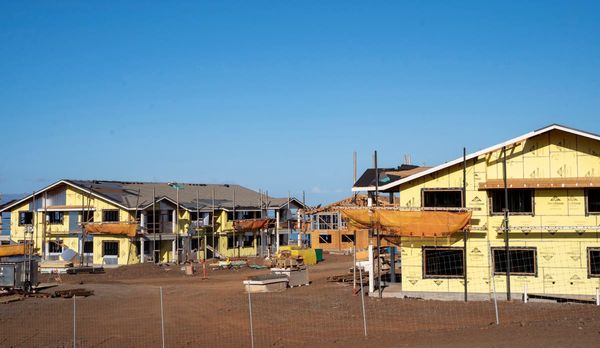
Up to 22 million Australians living on the coastline could be in danger this century after a study found there is no coming back from an “inevitable” ice melt in west Antarctica, which could increase sea levels by up to five metres and three times as fast as previously measured.
It’s particularly bad news for Australians, John Church, a former research scientist with CSIRO for 40 years, has told Crikey, where 87% live within 50km of the coast. Australia’s coastal dwellers are triple the worldwide proportion, where about a third of all humans live within 100km of a coastline.
Church, a professor emeritus at UNSW’s Climate Change Research Centre, led the ocean climate program in what was then the division of oceanography during the 1990s before establishing the Antarctic Climate and Ecosystems Research Centre.
“While Antarctica is not the only source of sea level rise, west Antarctica alone contains enough ice to raise sea level by about five metres if it all flowed into the ocean,” Church told Crikey. “Once the poorly known thresholds are crossed then the loss of the west Antarctic ice sheet may be unstoppable.”
Dr Simon Bradshaw, head of research at the Climate Council, agreed, telling Crikey that data showed there was no coming back from sea level rises anymore, “even if we were to reach zero emissions tomorrow”. The damage was too great.
“Seas have already risen by an average of around 0.2 metres due to climate change,” he said.
And it’s happening much faster than the centuries-long timeline experts once thought it would follow. Analysis from the British Antarctic Survey showed the rate would not be slowed even if the world was on track to keep global warming below 1.5 degrees above pre-industrial levels — which it is not, according to a damning report from the World Meteorological Organization (WMO).
“It appears that we may have lost control of the west Antarctic ice shelf melting over the 21st century,” researcher and ocean scientist with the British Antarctic Survey Kaitlin Naughten said.
Australia’s coastal urban nation would see a “dramatic increase” in the severity and frequency of coastal floods, Church said, forecasting “one-in-100-year events happening more than once a year during the latter half of the 21st century”.
The resulting coastal erosion from ongoing coastal calamities would quickly make Australia’s many affluent beachside properties a bad financial investment — particularly as securing insurance cover for the phenomenon is nearly impossible, as the Insurance Council warned.
The repairs and clean-up from the torrid June 2016 storm in Sydney’s northern beaches, for instance, cost the local government and homeowners an estimated $25 million, the council said.
Three consecutive wet La Niña years have already exacerbated the coastal erosion risk, according to a UNSW study published in February. Some 45% of Australia’s world famous beaches have experienced significant erosion during the La Niña years between 1984 and 2022.
“When buying a home it is very important that we understand the risks from climate change for that property and location — whether from sea level rise, worsening fire risks, extreme heat, or other factors,” Bradshaw said.
For those who live near the ocean, he said, it could be nearly as painful to relocate as to lose a home. It’s not just the expense and logistics but also a community’s longstanding connection to “a given place, its culture, and its social bonds”. Already heartbroken Vanuatu residents in six villages have been forced to relocate.
Helping our most vulnerable, “including low-lying communities in the Torres Strait and in the Pacific”, should become the government’s priority, but it’s clear Australians living on or near our coastlines are starkly exposed to rising sea levels too.
Australia bears a heavy responsibility for the ice melt when it comes to emissions per person. It has the highest per capita greenhouse gas emissions in the world — “and the emissions from our exported fossil fuels are even larger than emissions in Australia”, Church added, something the government frequently distances itself from.
“We are responsible for our domestic emissions and that’s why we are focused on bringing down our domestic emissions,” Environment and Water Minister Tanya Plibersek told the National Press Club last July.
Church said the most important thing Plibersek and Climate Minister Chris Bowen must do to mitigate sea level rise was to stop the development of all fossil exploration and mining. Australia already has “more than enough fossil fuels to complete the transfer to renewable energy”, and it’s “extremely urgent” to act now.
“Every smart decision, every tonne of pollution left in the ground, and every fraction of a degree of avoided warming matters,” he said. “Every day of delay means higher sea levels and faster rates of sea level rise.”
And the real human cost of that would be enormous, Naughten said: “How are we going to deal with the displacement of millions of people, or possibly over a billion people, depending on the amount of sea level rise?”
Does the Albanese government need a boot up the bum to take serious action on climate change? Let us know by writing to letters@crikey.com.au. Please include your full name to be considered for publication. We reserve the right to edit for length and clarity.







